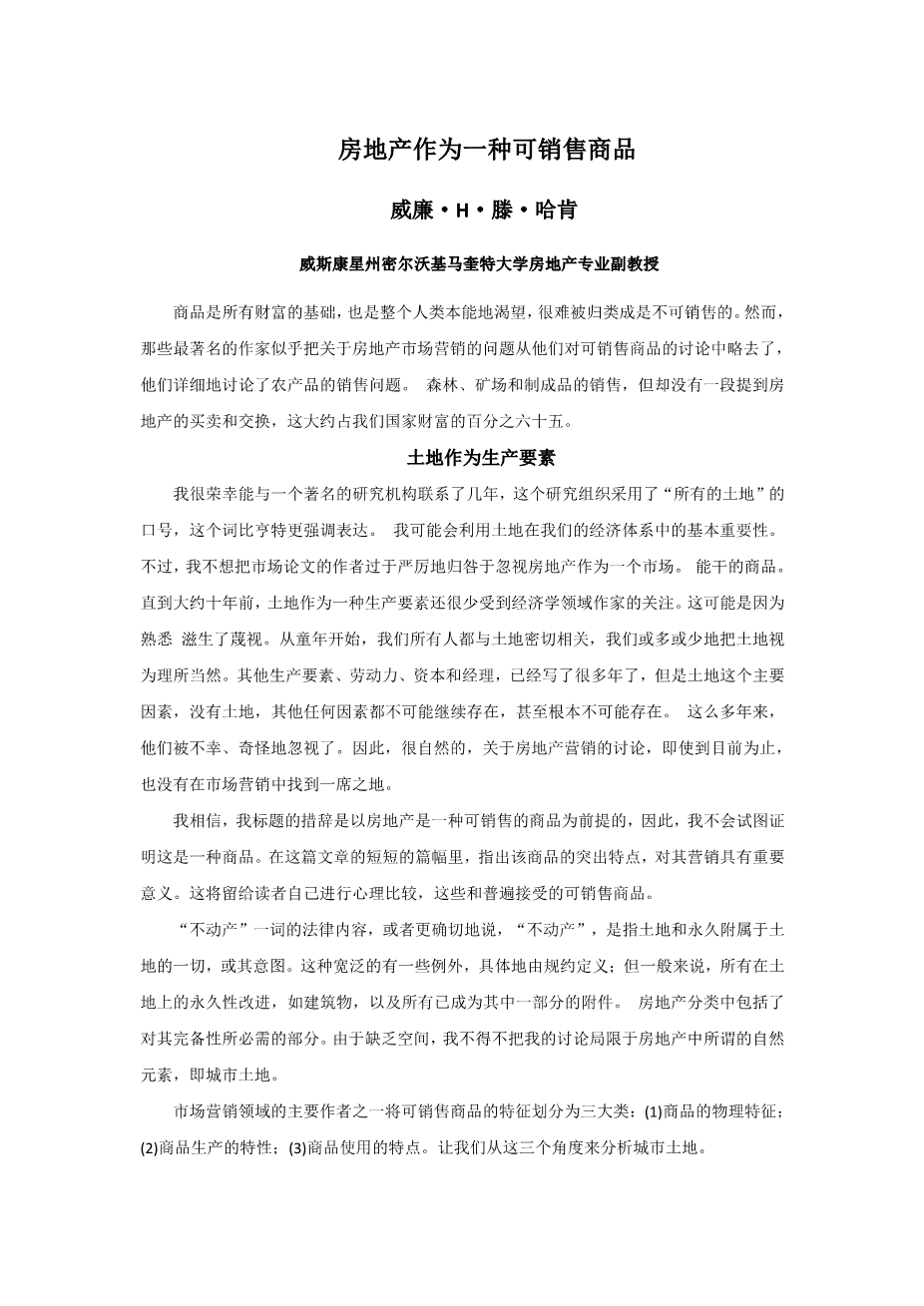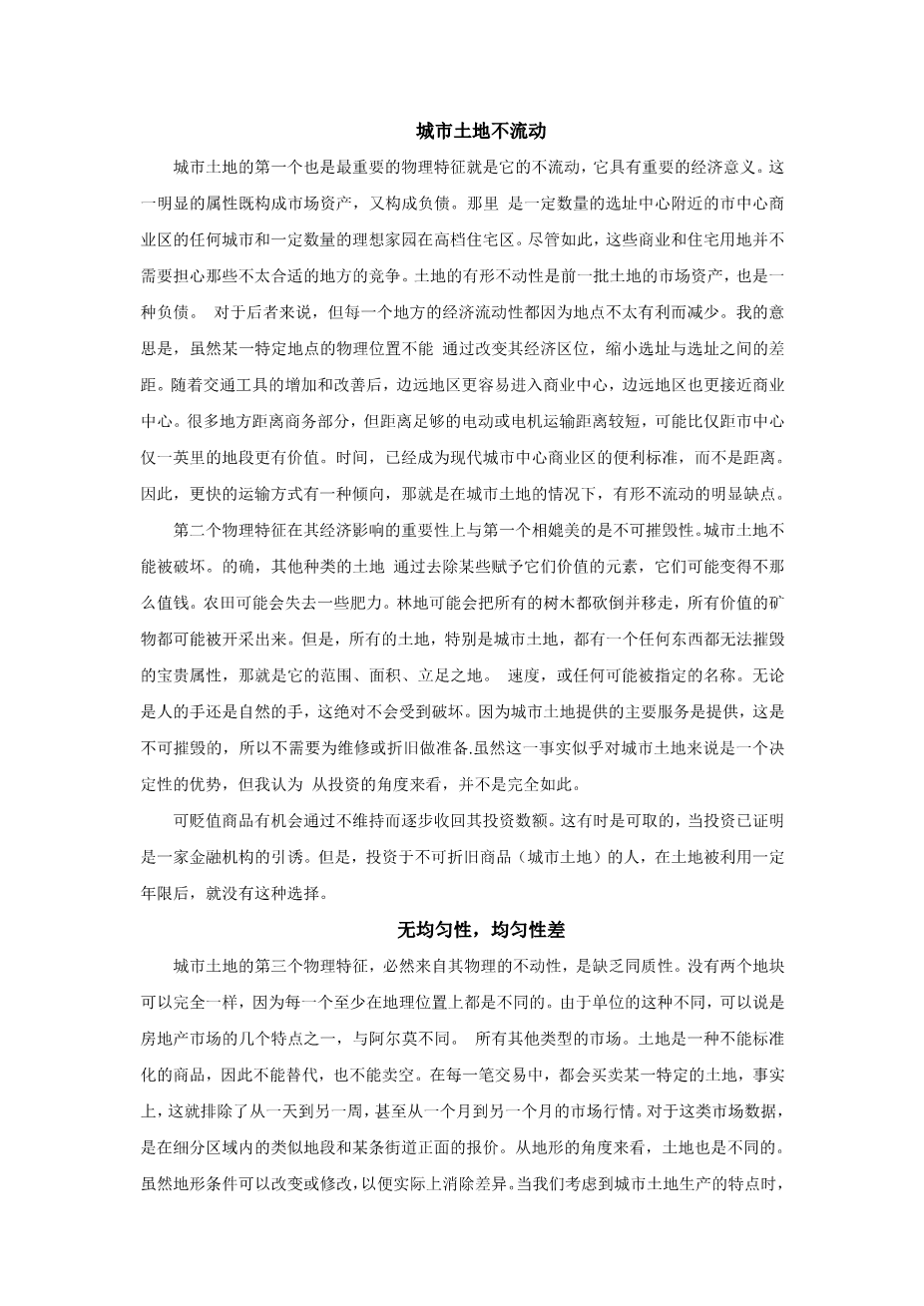Real Estate as a Marketable Commodity
By WILLIAM H. TEN HAKEN
Associate Professor of Real Estate Pracitce, Marquette University, Milwaukee, Wisconsin
Acommodity which forms the basis of all wealth and which is also instinctively desired by the entire human race can hardly be classed as unmarketable. Yet, that is precisely what the best-known writers on the subject of marketing seem to have done in the omission of real estate from their discussion of marketable commodities.They discuss at great length the marketing of agricultural products, of products of the forests and mines, and of manufactured products, but devote not so much as a single paragraph to the buying, the selling, and the exchanging of real estate, which comprises about sixty-five percent of our national wealth.
LAND AS A FACTOR OF PRODUCTION
It was my privilege to be associated for several years with a prominent research organization which has adopted the slogan, “Under All, the Land.”These four words express more emphatically than hundreds that I might use the basic importance of land in our economic system. I do not wish to take the writers of treatises on marketing to task too severely, however, for ignoring real estate as a marketable commodity. Until about ten years ago, land as a factor of production had received very little attention from writers in the field of economics. This may have been due to the fact that familiarity had bred contempt. All of us, from childhood on, have been so intimately associated with land that we have taken it more or less for granted. The other factors of production, labor, capital, and the manager, had for years been written about, but land, the primary factor, without which none of the other factors could continue to exist, or could even have come into existence in the first place, had for these many years been sadly and strangely neglected. So it is but natural that a discussion of the marketing of real estate should, even up to the present time, have found no place in marketing literature.
The wording of my title, I believe,presupposes that real estate is a marketable commodity, and I shall, therefore, not attempt to prove that it is such. Suffice it, in the brief space of this article, to point out the outstanding peculiar characteristics of this commodity which are of significance in its marketing. It will be left to the reader to make his own mental comparisons between each one of these and those of the generally accepted marketable commodities.
The legal content of the term “real estate,” or, more precisely, “realty,”is, land and all that is attached permanently to the land, or so intended. There are certain exceptions to this rather broad definition, specifically defined by statute; but, generally speaking, all permanent improvements made on the land, such as buildings, as well as all appurtenances which have been made a part of them or which are necessary to their completeness, are included in the classification of realty. Lack of space compels me to confine my discussion to the so-called natural element in real estate, that is, land, and more particularly to urban land.
One of the leading writers in the marketing field divides the characteristics of marketable commodities into three major classes: (1) physical characteristics of the commodity; (2) characteristics of the production of the commodity; and (3) characteristics of the use of the commodity. Let us analyze urban land from these three points of view.
IMMOBILITY OF URBAN LAND
The first and most important physical characteristic of urban land which is of economic significance is its immobility. This obvious attribute constitutes at once a market asset and a liability. There are a certain number of choice sites near the heart of the downtown business section of any city and a certain number of ideal home sites in the high-class residential districts. Conditions remaining as they are, these business and residential sites need never fear competition from those less suitably located. The physical immobility of land is a market asset to the former sites, and a liability to the latter; but each has been lessened by the economic mobility of the sites which have the less favorable locations. By this I mean that although the physical location of a particular site cannot be changed, its economic location can be improved, thus narrowing the gap which exists between the well-located and poorly-located sites. As the means of transportation are increased and the methods improved, business centers are being made more accessible to the outlying districts, and outlying districts are being brought closer to business centers. A lot located a distance of ten miles from the business section, but only a short distance from adequate electric or motor transportation, may be more valuable for residential purposes than a lot located only one mile away with no downtown transportation of any kind. Time, not distance, has become the criterion of convenience to the central commercial area of the modern city. Hence, faster forms of transportation have a tendency to off set the obvious disadvantage of physical immobility in the case of urban land.
A second physical characteristic which rivals the first in the importance of its economic implications is that of indestructibility. Urban land cannot be destroyed. It is true that other kinds of land may become less valuable through the removal of certain elements which give them value. Agricultural land may lose some of its fertility. Forest land may have all of the trees cut down and removed. Mineral land may have all of its valuable minerals extracted. But all land, and particularly urban land, has one valuable attribute which nothing can destroy, namely, its extent, area, standing-room, space, or whatever designation it may be given. That is absolutely not subject to destruction, either by the hand of man or by nature. Since the princip
剩余内容已隐藏,支付完成后下载完整资料


英语译文共 6 页,剩余内容已隐藏,支付完成后下载完整资料
资料编号:[466607],资料为PDF文档或Word文档,PDF文档可免费转换为Word
以上是毕业论文外文翻译,课题毕业论文、任务书、文献综述、开题报告、程序设计、图纸设计等资料可联系客服协助查找。


